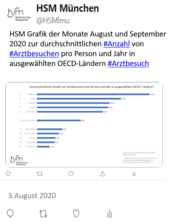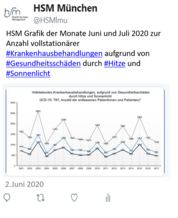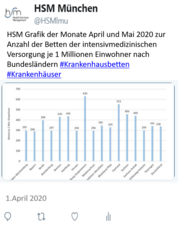Waiting Times in the Ambulatory Sector. The case of chronically ill patients.
| Autoren/Herausgeber: |
Sundmacher, L. Kopetsch, T. |
|---|---|
| Erschienen: | 2013 |
| Publikationsart: | Articles in Refereed Journals (International) |
| ISBN/ISSN: | 1475-9276 |
| erschienen in: | International Journal for Equity in Health. |
| Weitere Quellenangabe: | Volume 12, Issue 1, Page 77 |
Abstract
Aims
First, the influence of determinants on the waiting times of chronically ill patients in the ambulatory sector is investigated. The determinants are subdivided into four groups: (1) need, (2) socio-economic factors, (3) health system and (4) patient time pressures. Next, the influence of waiting times on the annual number of consultations is examined to assess whether the existing variation in waiting times influences the frequency of medical examinations. The waiting times of chronically ill patients are analysed since regular ambulatory care for this patient group could both improve treatment outcomes and lower costs.
Data sources
Individual data from the 2010 Representative Survey conducted by the National Association of Statutory Health Insurance Physicians (KBV) together with regional data from the Federal Office of Construction and Regional Planning.
Study design
This is a retrospective observational study. The dependent variables are waiting times in the ambulatory sector and the number of consultations of General Practitioners (GPs) and specialist physicians in the year 2010. The explanatory variables of interest are ‘need’ and ‘health system’ in the first model and ‘length of waiting times’ in the second. Negative binomial models with random effects are used to estimate the incidence rate ratios of increased waiting times and number of consultations. Subsequently, the models are stratified by urban and rural areas.
Results
In the pooled regression the factor ‘privately insured’ shortens the waiting time for treatment by a specialist by approximately 28% (about 3 days) in comparison with members of the statutory health insurance system. The category of insurance has no influence on the number of consultations of GPs. In addition, the regression results stratified by urban and rural areas show that in urban areas the factor ‘privately insured’ reduces the waiting time for specialists by approximately 35% (about 3.3 days) while in rural areas there is no evidence of statistical influence. In neither of the models, however, does the waiting time have a documentable effect on the number of consultations in the ambulatory sector.
Conclusions
In our random sample, characteristics of the health care system have an influence on the waiting time for specialists, but the waiting time has no documentable effect on the number of consultations in the ambulatory sector. In the present analysis this applies to consultations of both GPs and specialists. Nevertheless, it does not rule out the possibility that the length of waiting times might influence the treatment outcomes of certain patient populations.





